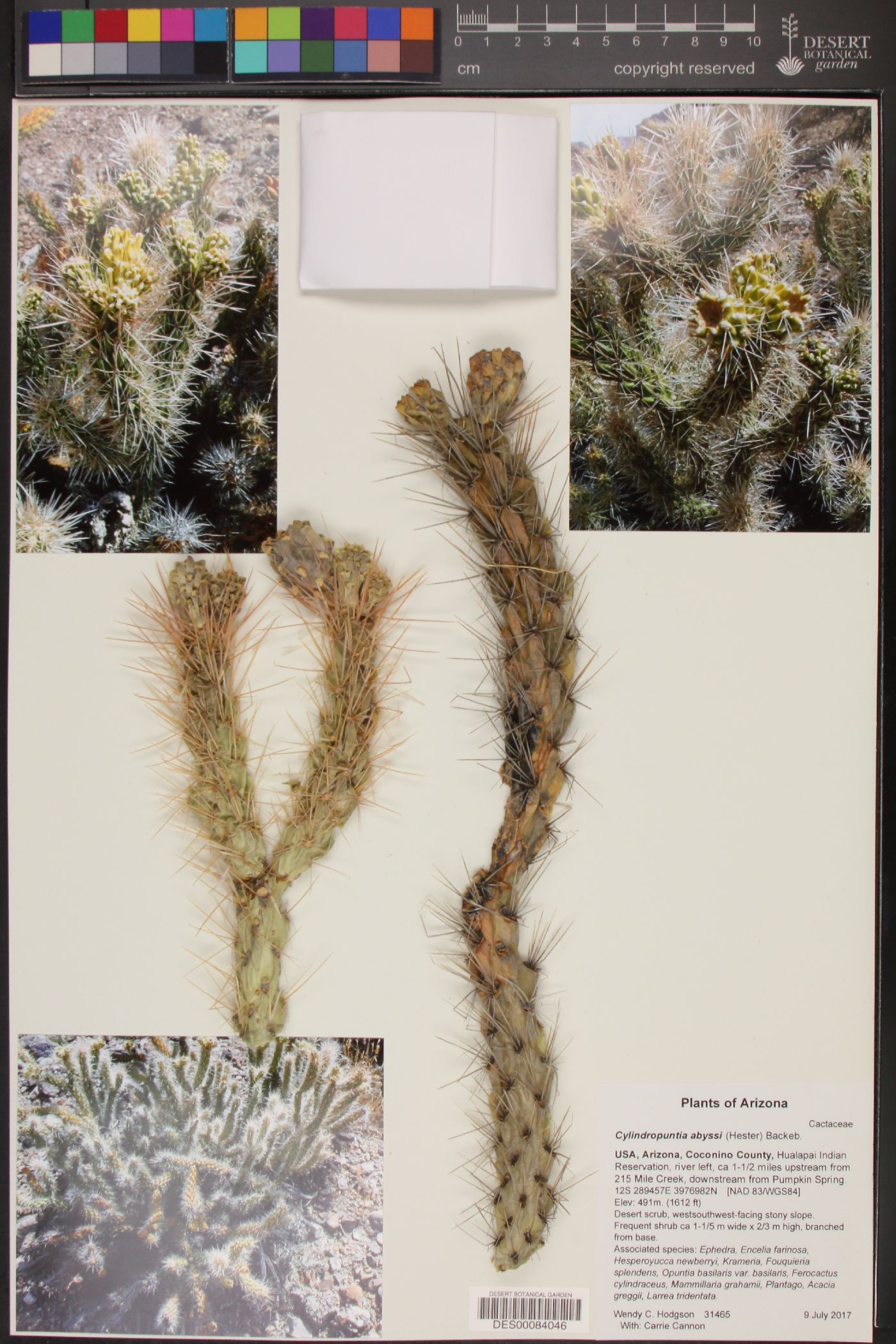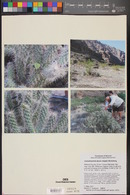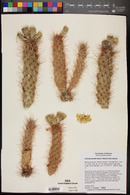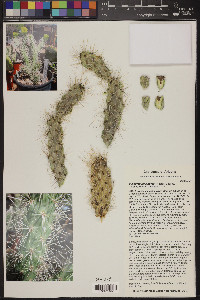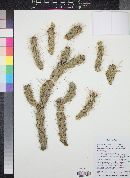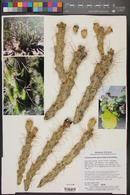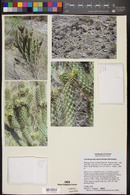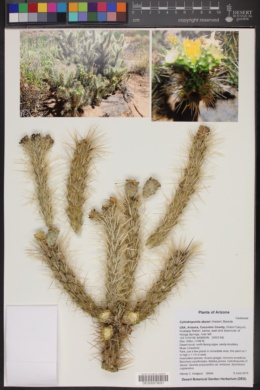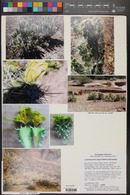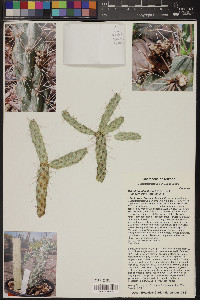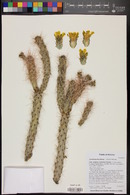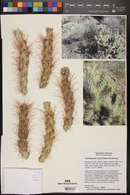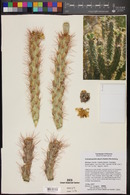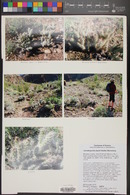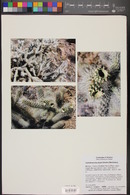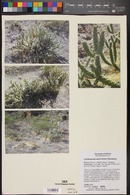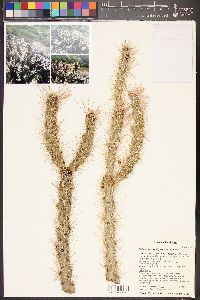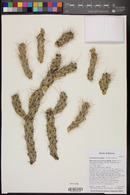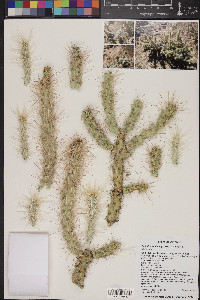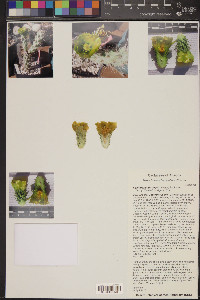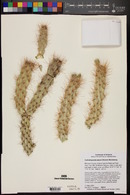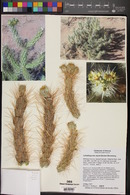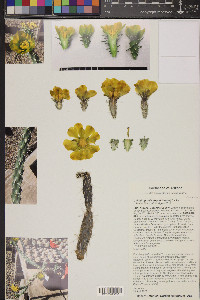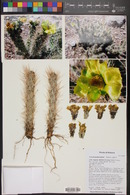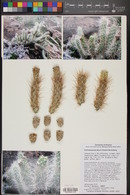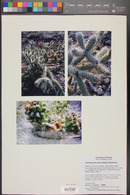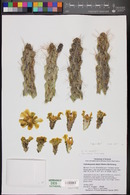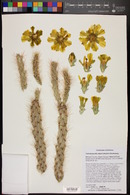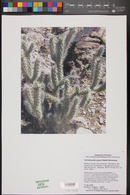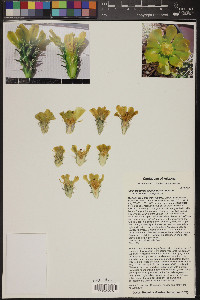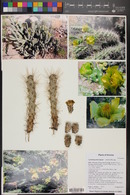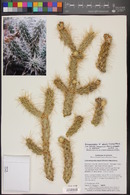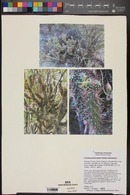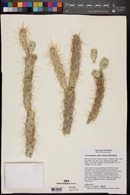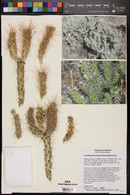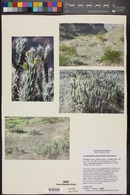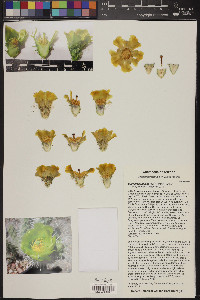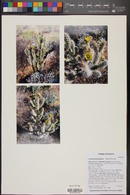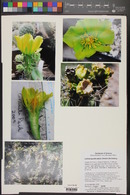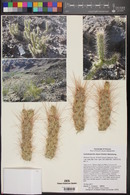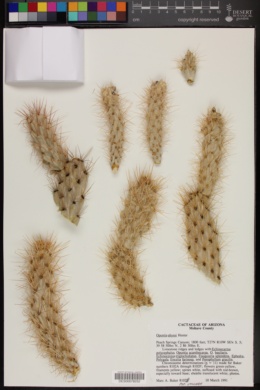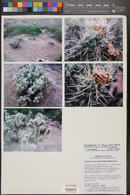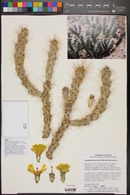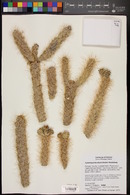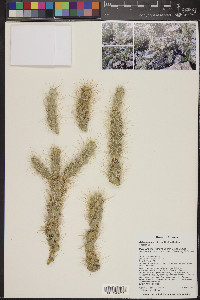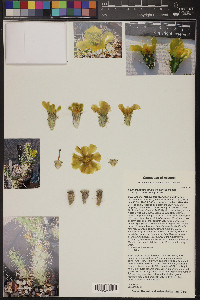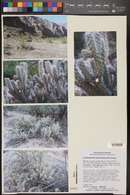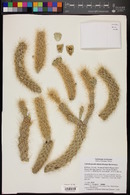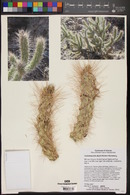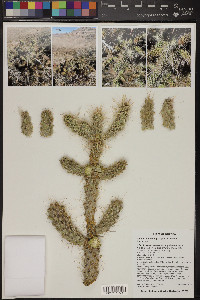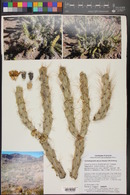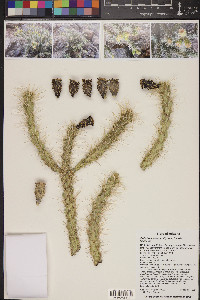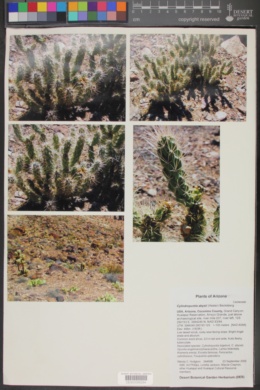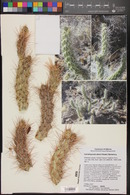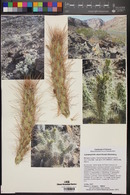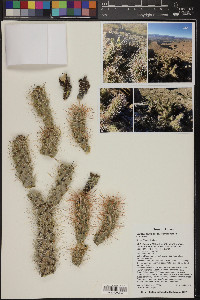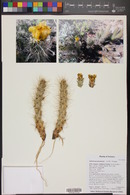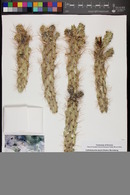Cylindropuntia abyssi
|
|
|
|
Family: Cactaceae
Peach Springs Canyon Cholla
[Cylindropuntia abysii, moreOpuntia abysii] |
Trees and shrubs, openly branched, to 1 m. Stem segments somewhat detachable, 8-14 × 1.8-2.5 cm; tubercles prominent, 0.6-1.5 cm, moderately broad; areoles elliptic, 5-7 × 2.5-3.5 mm; wool white to gray. Spines in brushlike clusters of 10-15 per areole, flexible, whitish to yellowish tan, aging gray; abaxial ones erect to descending, recurved, angularly flattened to flattened, sometimes twisted, the longest 23-38 mm; adaxial ones ascending, erect, divergent, terete to angularly flattened basally, the longest 18-32 mm; sheaths silvery white. Glochids in inconspicuous small adaxial tuft, pale yellow, 0.5-1.5 mm, few much longer and scattered along periphery of areole. Flowers: inner tepals pale yellow to greenish yellow, spatulate, 15-20 mm, apiculate; filaments yellow; anthers yellow; style off-white; stigma lobes yellowish. Fruits green becoming dull yellow, dry, tuberculate, spineless or with 1-2 short spines; tubercles subequal in length; umbilicus deep, 7 × 15-18 mm; areoles 16-24. Seeds tan, slightly angular and warped, 3-4 × 3.2-3.5 mm; girdle smooth. 2n = 22. Flowering spring-early summer (Mar-Jun). Desert scrub, limestone ledges and crests; 500-800 m; Ariz. Cylindropuntia abyssi is tentatively viewed as a narrow endemic relict in Peach Springs Canyon, Mojave County, Arizona, but may well be a persistent hybrid derivative, most likely involving C. bigelovii. Hybrids between Cylindropuntia abyssi and C. acanthocarpa have a shrub habit, long-divergent and loosely sheathed spines, and more elongate tubercles than C. abyssi.
PLANT: Shrubby trees, openly branched, to 1 m tall. STEM: segments detachable, but not as easily as in C. bigelovii, cylindric, 8-14 cm long, 1.8-2.5 cm in diam.; tubercles prominent, moderately broad, 6-15 mm long. AREOLES: white to gray, aging gray-white, elliptic, 5-7 mm long, 2.5-3.5 mm wide. SPINES: whitish to yellowish tan, aging gray, flexible, in brush-like clusters of 10-15 per areole; upper ones erect, divergent, terete to angularly flattened at base, the longest 18-32 mm long, erect, ascending; lower ones recurved, angularly flattened to flat, sometimes twisted, erect to descending, the longest 23-38 mm long; sheaths silvery white. GLOCHIDS: pale yellow, in inconspicuous small apical tuft, 0.5-1.5 mm long, a few much longer and scattered along periphery of areole. FLOWER: inner tepals pale to greenish yellow spatulate, apiculate, 1.5-2 cm long; filaments yellow, the anthers yellow; style whitish; stigmas yellowish. FRUIT: green becoming yellow, dry, tuberculate with deep umbilicus, 14-17 mm long, 15-18 mm in diam., spineless or with 1-2 short spines; areoles 16-24. SEEDS: 3-4 mm long, 3.2-3.5 mm wide, tan, slightly angular and warped, the sides and girdle smooth. [Opuntia abyssi Hester] 2n = 22. NOTES: Desertscrub, on limestone ledges and crests, Peach Springs Canyon: Mohave Co.; 500-750 m (1600-2300 ft); Mar-May. Tentatively viewed as a narrow endemic relict but may well be a persistent hybrid derivative, most likely involving C. bigelovii. REFERENCES: Pinkava, Donald J. 1999. Cactaceae. Ariz. - Nev. Acad. Sci. 32(1). |

